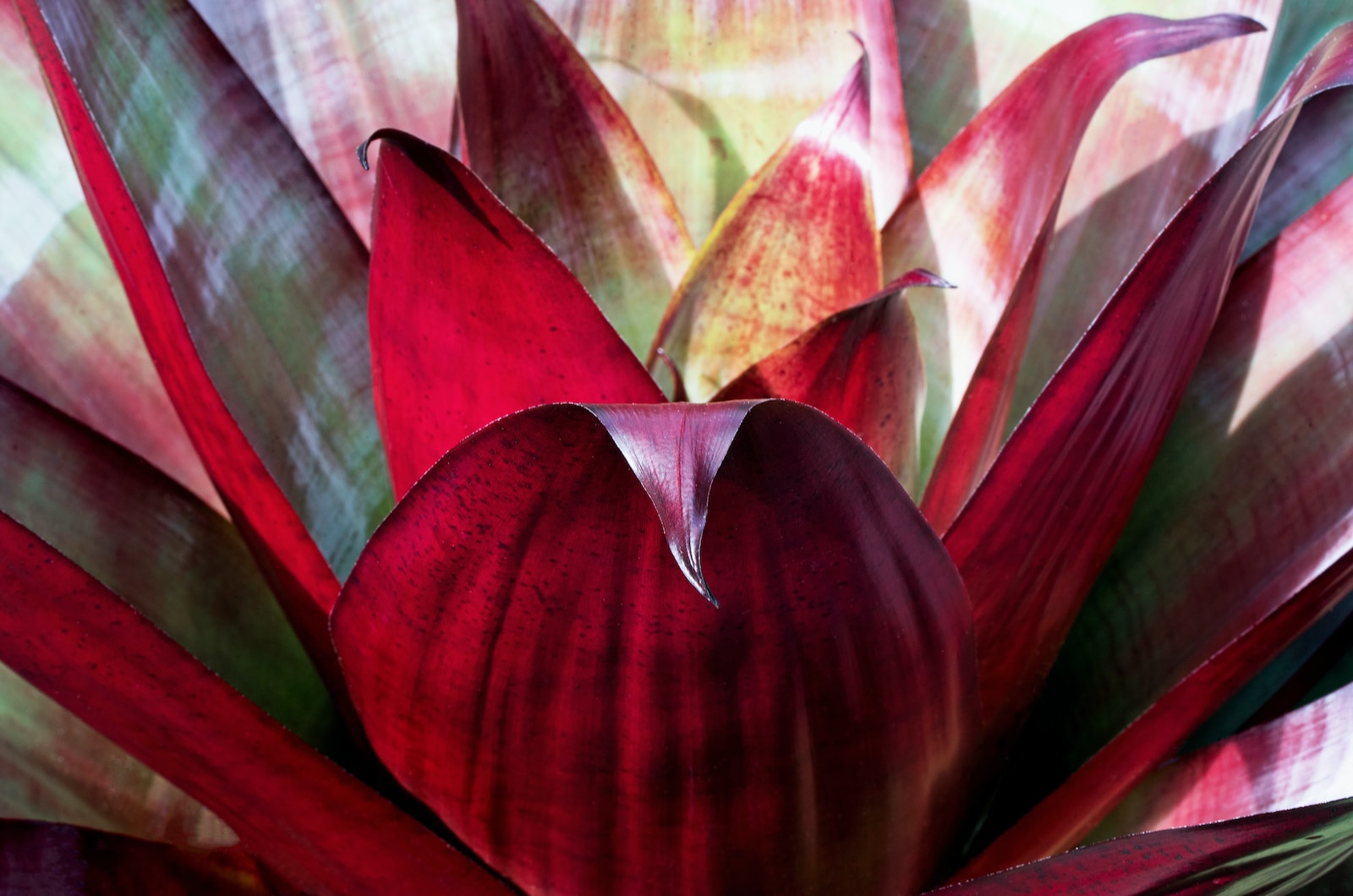Bromeliads are a diverse and colorful family of tropical plants known for their ornamental features. With over 3,000 different species, the variety within the Bromeliaceae family is vast, ranging from the pineapple to exotic-looking houseplants. Native to the tropical and subtropical regions of the Americas, these plants are characterized by rosettes of stiff leaves and brightly colored flowers.
Often grown for their striking appearance, Bromeliads can be found both indoors and outdoors in suitable climates. They are well-adapted to a variety of growing conditions and are generally considered low-maintenance, making them an attractive choice for gardeners at all levels. The diversity within this family means that there is a Bromeliad for nearly every situation, from shaded corners of the garden to sunny windowsills.
What makes Bromeliads truly unique is their ability to absorb water and nutrients through their leaves rather than their roots. Many species have adapted to grow on trees or rocks, making them epiphytic or lithophytic in nature. This unique adaptation has led to a wide variety of growth habits and appearances within the family.
| Attribute | Details |
|---|---|
| Common Names | Bromeliads |
| Botanical Name | Bromeliaceae family |
| Family | Bromeliaceae |
| Plant Type | Tropical perennial |
| Mature Size | Varies by species (1-30 feet) |
| Sun Exposure | Partial shade to full sun |
| Soil Type | Well-draining, epiphytic mix |
| Hardiness Zones | 9-11 |
| Native Area | Americas |
Bromeliad Care
Bromeliad care can be relatively straightforward due to the plants’ adaptability. They require specific attention to their light, water, and soil needs, but once these are met, they can thrive with little intervention.
The most crucial aspect of Bromeliad care is understanding the specific needs of the species you have, as requirements can vary significantly. Providing the right balance of light, moisture, and nutrients will result in healthy growth and vibrant blooms.
Light Requirement for Bromeliads
Bromeliads generally prefer bright, indirect sunlight. However, some species may tolerate more direct sunlight, while others may require more shade. It’s essential to research the specific needs of your Bromeliad species and adjust its location accordingly.
Soil Requirements for Bromeliads
Most Bromeliads are epiphytic, meaning they grow on trees or rocks rather than in soil. A well-draining, loose growing medium like orchid bark mixed with perlite is typically suitable. The goal is to provide support and retain some moisture while allowing excess water to drain away.
Water Requirements for Bromeliads
Bromeliads have unique watering needs, absorbing water through their leaves instead of their roots. Fill the central cup of the plant with water, and allow the excess to drain away. The soil should be kept relatively dry to prevent root rot, and the central cup should be emptied and refilled with fresh water regularly to prevent stagnation.
Temperature and Humidity
Bromeliads thrive in temperatures ranging from 55-80°F (13-27°C) and appreciate high humidity. A room humidifier or a tray with pebbles and water can help maintain humidity levels, especially in drier indoor environments.
Fertilizer
Bromeliads typically require little fertilization. If desired, a diluted liquid fertilizer can be applied to the leaves and central cup during the growing season. Be sure to use a balanced fertilizer specifically designed for Bromeliads or air plants.
Pruning Bromeliads
Pruning is generally limited to removing dead or damaged leaves and spent flower stalks. This can be done with clean, sharp scissors to maintain the plant’s appearance.
Propagating Bromeliads
Bromeliads propagate through “pups” or offsets that grow at the base of the plant. Once the pup is one-third the size of the parent plant, it can be carefully cut off and replanted.
How To Grow Bromeliads From Seed
Growing Bromeliads from seed is a more complex process, generally reserved for enthusiasts. Seeds must be sown on a specialized growing medium and kept in a warm, humid environment to germinate.
Common Pests & Plant Diseases
Scale
Small insects that may appear on leaves.
Mealybugs
A pest that can cause damage to the leaves.
Common Problems With Bromeliads
Root Rot
Caused by overwatering, particularly in the soil.
Browning Tips
Often a sign of low humidity or excessive fertilizer.
Pro Tips
- Monitor the central cup for stagnation and refresh the water as needed.
- Choose the right growing medium for epiphytic species.
- Be patient with flowering; some Bromeliads may take years to bloom.
- Research the specific needs of your species to provide optimal care.
- Consider displaying Bromeliads in groups to create visual impact.




